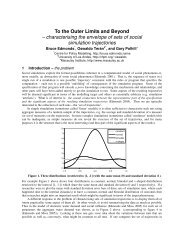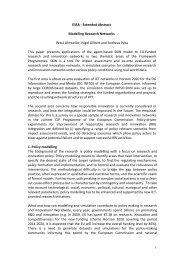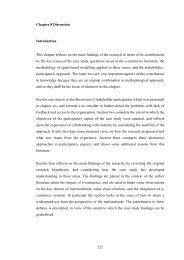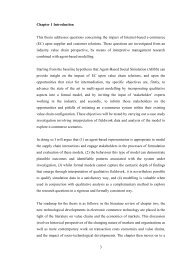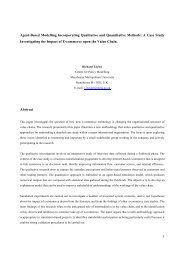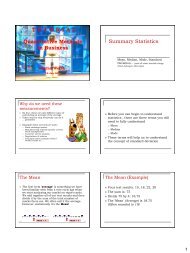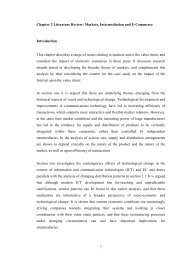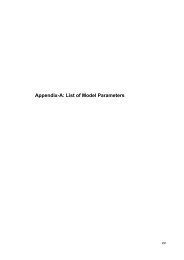Modelling the Socio-Economic Impact of HIV/AIDS in South Africa
Modelling the Socio-Economic Impact of HIV/AIDS in South Africa
Modelling the Socio-Economic Impact of HIV/AIDS in South Africa
You also want an ePaper? Increase the reach of your titles
YUMPU automatically turns print PDFs into web optimized ePapers that Google loves.
Figure 4: Snapshots <strong>of</strong> <strong>the</strong> sav<strong>in</strong>gs club memberships for time steps from left to right: t=125, 250,<br />
375, 500, 750 and 875, respectively.<br />
Figure 5: Time series <strong>of</strong> deaths (red: caused by <strong>HIV</strong>/<strong>AIDS</strong>) occurr<strong>in</strong>g dur<strong>in</strong>g <strong>the</strong> simulation run<br />
Conclusion and Outlook<br />
The agent-based model presented <strong>in</strong> this paper has been developed for one <strong>of</strong> <strong>the</strong> case studies <strong>of</strong> <strong>the</strong><br />
CAVES project. Nei<strong>the</strong>r case study nor model development is f<strong>in</strong>ished yet, so results can only be<br />
prelim<strong>in</strong>ary at this stage. Never<strong>the</strong>less, <strong>the</strong>y demonstrate that <strong>the</strong> approach <strong>of</strong> agent-based social<br />
simulation we adopted to simulate <strong>the</strong> complex impacts <strong>of</strong> <strong>HIV</strong>/<strong>AIDS</strong> on social networks <strong>in</strong> rural<br />
<strong>South</strong> <strong>Africa</strong> is not only feasible but promis<strong>in</strong>g.<br />
The next steps to take will <strong>in</strong>clude fur<strong>the</strong>r validation <strong>of</strong> <strong>the</strong> model aga<strong>in</strong>st newly ga<strong>the</strong>red<br />
empirical evidence. This data will also be used to expand <strong>the</strong> model by <strong>in</strong>corporat<strong>in</strong>g enhanced<br />
decision procedures for <strong>the</strong> agents, e.g. strategies to adapt to chang<strong>in</strong>g circumstances <strong>in</strong> <strong>the</strong>ir physical<br />
and social environment.<br />
Currently, <strong>the</strong> model is restricted to one-village scenarios. In a closed community, <strong>the</strong>re are<br />
dense overlapp<strong>in</strong>g ties among <strong>the</strong> residents. An important next step would be to scale <strong>the</strong> model up to<br />
several villages and observe <strong>the</strong> <strong>in</strong>ter-village ties. Fur<strong>the</strong>rmore, we need to model <strong>the</strong> role <strong>of</strong><br />
migration/external labour <strong>in</strong> more detail. This is important <strong>in</strong> understand<strong>in</strong>g <strong>the</strong> effects <strong>of</strong> remittance<br />
as well as <strong>the</strong> spread <strong>of</strong> <strong>HIV</strong>/<strong>AIDS</strong>. An important contribution <strong>of</strong> <strong>the</strong> extended family network is<br />
‘mutual help’ which needs to be <strong>in</strong>corporated as well. We know from our doma<strong>in</strong> experts that<br />
households borrow food from neighbours and <strong>in</strong>troduc<strong>in</strong>g this feature <strong>in</strong>to <strong>the</strong> model is highly<br />
significant. F<strong>in</strong>ally, fur<strong>the</strong>r developments would contribute to <strong>the</strong> understand<strong>in</strong>g <strong>of</strong> dynamic social<br />
networks. Some ideas <strong>in</strong> this regard have been suggested <strong>in</strong> a different paper (Alam and Meyer 2006).




